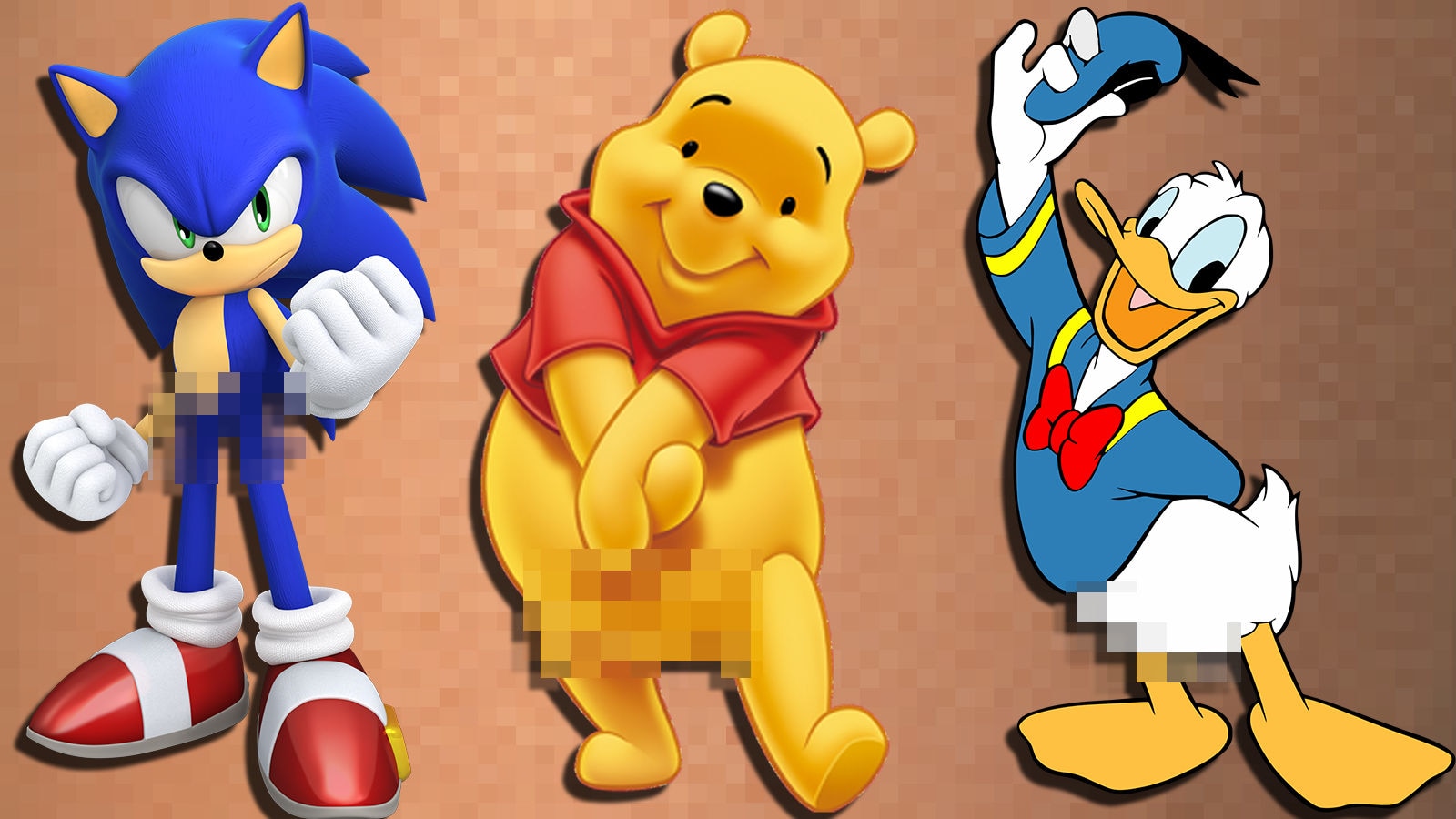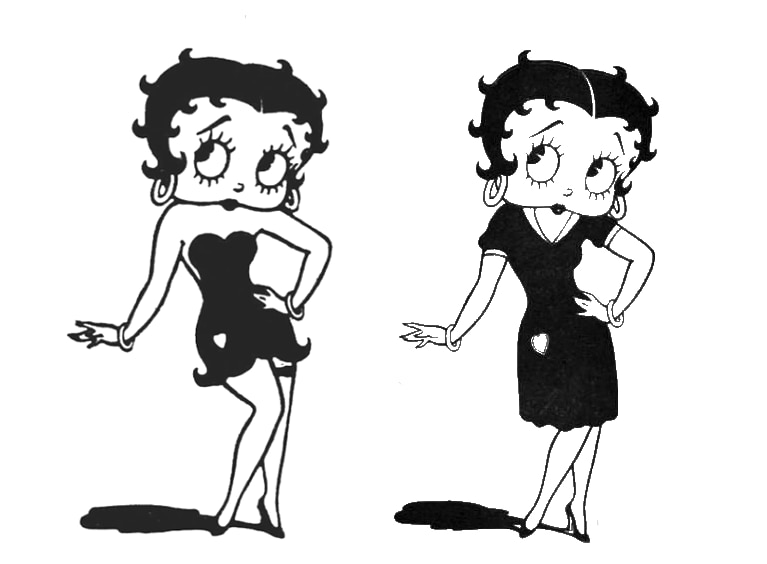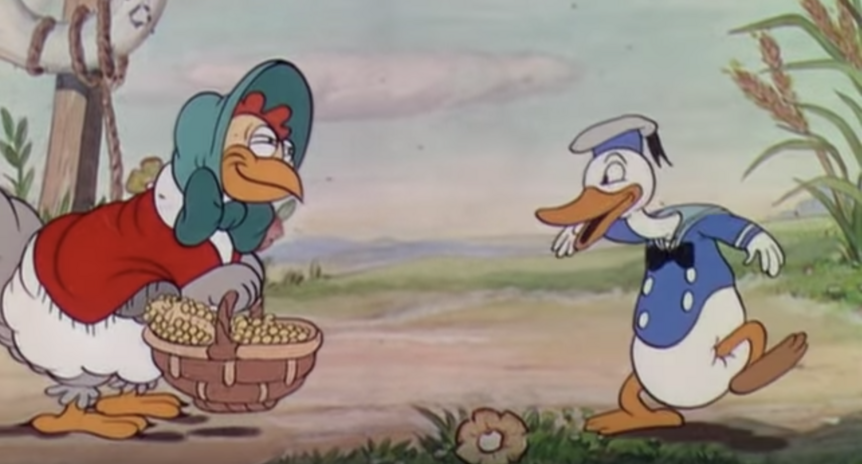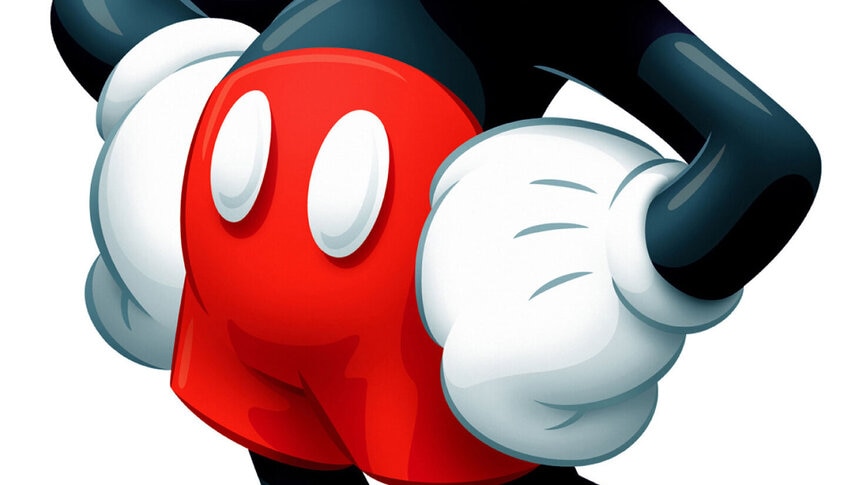Create a free profile to get unlimited access to exclusive videos, sweepstakes, and more!
Sonic is a nudist. Winnie goes bare-bottomed. Why do so many cartoons go naked? We investigate.

Animated animal protagonists in children's cartoons aren't usually naked, but they're rarely fully clothed. Winnie the Pooh cavorts around the Hundred Acre Wood wearing naught but a T-shirt, exposing his round, golden bottom to the elements. Sonic the Hedgehog sports only sneakers, socks, and white gloves as he chases rings. Mickey Mouse wears a pair of pants and gloves, and Bugs Bunny just wears gloves. If an animator pitched a human character for a children's show who dressed in this manner, they'd probably be arrested, or at least put on some kind of industry watch list.
So how are these costuming decisions made in the first place? It's now the norm for anthropomorphized characters to wear a bit more clothing than their predecessors (think of Paddington's smart little toggle coat or SpongeBob's suspenders and dress shirt), but nudity is still somewhat prevalent, and companies tend to leave the original figures in their various states of undress.
It helps to turn the question around and look at it another way: the act of putting an item of clothing on a cartoon animal actually introduces the subject of nudity. Most cartoon characters are unaware that they're naked, unless a designer puts them into a costume. Animation historian and San Francisco State media professor Karl Cohen says that early production codes responded to cartoon nudity in an inconsistent manner. Human characters, even when sporting exaggerated features, were suddenly held to the same standards as live-action actors. "When the production code was first enforced in 1934, Betty Boop's dress had to suddenly become longer," Cohen tells SYFY WIRE. "Her blouse had to be buttoned up with no cleavage."
Things got confusing when animation studios started anthropomorphizing animals, though. "When a cow got dressed for a party in an early 1930s Disney cartoon," Cohen says, "the censor realized that meant she had been walking around naked during the first half of the short. And that complaint was enough for Disney to have its cows wearing skirts and dresses after the short was released." Perhaps because they found these new censorship standards annoying, many animators began adding obviously risque gags into their projects as red herrings to distract the censors, says retired animation professor Paul Mular. And it worked.
"In the old Elmer Fudd short, 'An Itch in Time,' you can see a bit that was left in, though it was originally a decoy line the animators assumed would be cut," Mular explains. "Elmer's dog has fleas and Elmer wants to give him a flea bath. The dog insists he doesn't have fleas, and he tries to hide his discomfort to avoid getting that bath. At one point, the dog starts to drag his butt across the carpet to get rid of the itch, and he stops and looks at the 'camera' to say, 'I better cut this out, or I might get to like it!'"
Animation historian Jerry Beck says that anthropomorphized cartoon characters like Sonic, Winnie the Pooh, Mickey Mouse, and Bugs Bunny have been able to skirt the rules of human rules of decency throughout their tenure because they're not intended to be fully realized characters. They're not Betty Boop or Jessica Rabbit, who often pushed the limits of American censorship and the production code to their breaking point.
"Many of the designers who worked on [anthropomorphized] characters were actually in the business of creating icons," Beck tells SYFY WIRE. "Before they had storylines, Bugs Bunny and Mickey Mouse and such were just clusters of visual indicators. You have seconds, just a few seconds to get information across as an animator, so each piece of clothing on a character has a distinct purpose."
Beck explains his cartoon-character-as-icon theory using Donald Duck.
"In Donald's first appearance [in 1934's 'The Wise Little Hen'], he's in a little sailor suit, right? Well, that's playing on a couple of things at once," he says. "In the first cartoons, he's near water or on a boat. So the costume is logical on that level. In the 1930s, people were routinely dressing their kids in little sailor suits. It was trendy at the time, so it would have been a recognizable get-up for the audience. A lot of kids were meeting Donald while dressed the same way. But he's a duck, right? So he doesn't need the pants. They'd make swimming around awkward, and we get the point with the sailor hat and shirt."
Donald's sailor cap and uniform shirt were once a combination of factors and cultural in-jokes, but over the past ninety-plus years, they've lost their relevance. When we see Donald pop up in film and television, and when he's not dressed to fill a specific role in the narrative, he often wears that original sailor suit as a default. And nobody really asks themselves why.
The pattern applies to pretty much any animated character; Beck says you just have to consider the objectives of the original designer who put them together. "Take Winnie the Pooh for instance," he says. "He's not just any bear in the woods, right? He belongs to a little boy who loves him, so it stands to reason that Christopher Robin might put a little shirt on him to set him aside from other woodland creatures. He's got a shirt because somebody cares about him."
WHAT ABOUT SONIC THE HEDGEHOG?
Though Beck specializes in classic animation and not video games, he says the same design logic also applies to a character like Sonic the Hedgehog, who was originally designed by Naoto Oshima and Hirokazu Yasuhara in 1990. "He's fast, right? So he needs sneakers to tell us that," Beck says. "If you slap a bow tie on Sonic, then you've gone off-topic, and your audience is wondering why it's there. You don't need a full backstory in his costume. You just need to indicate quickness and speed, so you do it with a single item."
But Sonic's shoes aren't just shoes. Their red and white minimalist design was loosely based on Michael Jackson's Bad album cover, and they're composed of just a few sleek lines wherever they appear.
"They're so simple that they don't even register as sneakers if you separate them from Sonic," says illustrator Tyson Hesse. Few people understand the details of Sonic's design better than Hesse, who was hired in 2019 to oversee the rehaul of the character's look in the upcoming film, after audiences reacted angrily to the first theatrical trailer.
Hesse taught himself to draw by drawing Sonic as a child, and he was eventually hired by Archie Comics to produce variant covers and line art after pitching the publisher his fan comics. "What you want is a couple of lines that evoke the memory of clothing, more than realistic detailing. For instance, without the context of Mickey's body, his pants look like this weird round shape with two circles. That's just how animated icons are usually rendered."
Sonic's simple, effective design that has kept Hesse working on the character for so many years.
"It's not just what he's wearing that communicates speed," Hesse explains. "Even in his default standing state, Sonic represents the promise of kinetic energy. He's made up of these big shapes held together with skinny limbs. At the end of Sonic's skinny limbs, he's got the huge gloves and the huge sneakers, which means he has four pendulums begging to be in motion. His face is shaped like a bullet, and the back of his silhouette is made up of aerodynamic spikes. You look at a picture of Sonic and you can't imagine he's built for anything but speed."
Most importantly, Hesse says Sonic's costume design can't be altered too dramatically, because — like slapping a pair of pants on Winnie the Pooh — taking off Sonic's gloves or shoes opens up a Pandora's box of possibilities. "Trust me," Hesse says, "you don't want to know whether Sonic has fingernails or toenails. Under those gloves, Sonic's hands would be bulbous and sort of disturbing. He's a little rat-man who lives in the forest, so he definitely doesn't need those pristine, white gloves, but taking them off sends you places you don't really want to go."
THE OLD, UNFORTUNATE GENESIS OF MICKEY MOUSE GLOVES
Much like the Kardashian paradox, which states that Kris Jenner's offspring are famous simply for being famous, Sonic the Hedgehog wears white gloves because he always did. They're a nod to the gloves donned by the many animated, anthropomorphized critters who predate Sonic, including Mickey Mouse and Bugs Bunny. The reason they wear gloves is a bit murkier.
"When they were first making animated shorts, it was easier to read what a character like Mickey Mouse was doing if he wore gloves," Beck explains. He says comprehending the information a cartoon yields is called "reading the gag," and this was easier for audiences in the 1920s and '30s if a designer used high contrast. "Plus, you gotta remember that these early cartoons were screened for audiences who were sitting behind a bunch of people. They might have been kids in the balcony section, and even years later in the 1950s, people were watching cartoons on television sets with fuzzy reception. That's why you get such a thick outline on early versions of Bugs and Mickey, and that's also partly why you always see those gloves."
Much like Donald Duck's sailor outfit would have looked familiar to children in the '30s, Bugs and Mickey's gloves would have made perfect sense to audiences familiar with watching vaudeville shows (and racist minstrel shows, unfortunately.) "The gloves worked the same way in person," Beck explains, "and a kid in the '30s would have known that somebody in front of a crowd who's wearing white gloves is about to do something interesting."
Whether it's gloves, sneakers, or a persistent lack of pants in cartoons, Beck says the explanation for most animated costumes is somewhat disappointing.
"One thing I've learned from decades of researching this medium is that designers don't often come up with in-universe explanations for these things," he says. "I get fans asking me all the time, you know, 'why'd they draw so and so this way?' or 'why's he wearing this one thing in one cartoon, but not in the other?' Honestly, it typically comes down to budget and time constraints. Characters wearing gloves because his designer wanted to call attention to his hands. He's not wearing pants because drawing pants is a waste of time. Believe me, it can really shoot an arrow into your artistic heart."


















